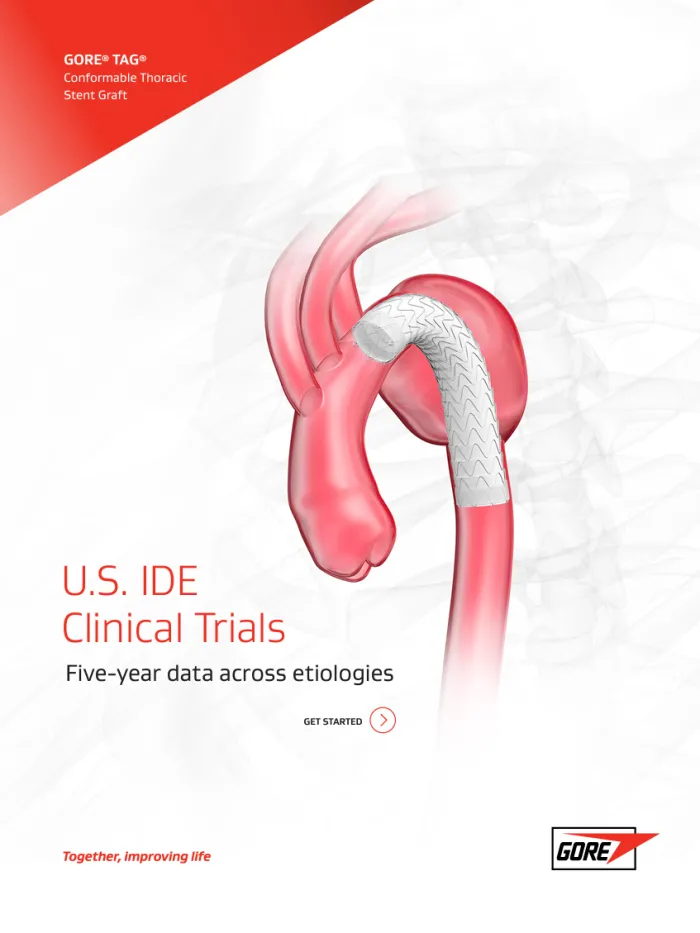25 Years of TEVAR: GORE® TAG® Conformable Thoracic Stent Graft with ACTIVE CONTROL System
Building on 25 years of TEVAR experience we’ve combined a proven stent graft with controlled, staged deployment, uniquely designed for trusted conformability and anatomical adaptability.
We create solutions engineered to perform as promised
From the first FDA approved thoracic device to future development, we are TEVAR
Related to this product
* Paid consultant for Gore.

Refer to Instructions for Use at eifu.goremedical.com for a complete description of all applicable indications, warnings, precautions and contraindications for the markets where this product is available. RXOnly
INDICATIONS FOR USE IN THE U.S.: The GORE® TAG® Conformable Thoracic Stent Graft is intended for endovascular repair of all lesions of the descending thoracic aorta, including: isolated lesions in patients who have appropriate anatomy, including: adequate iliac/femoral access, aortic inner diameter in the range of 16-42 mm, ≥ 20 mm non-aneurysmal aorta proximal and distal to the lesion; Type B dissections in patients who have appropriate anatomy, including: adequate iliac/femoral access, ≥ 20 mm landing zone proximal to the primary entry tear; proximal extent of the landing zone must not be dissected, diameter at proximal extent of proximal landing zone in the range of 16-42 mm.
CONTRAINDICATIONS: Patients with known sensitivities or allergies to the device materials; patients who have a condition that threatens to infect the graft.







